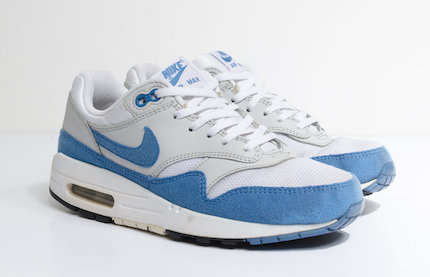The Wall Street buzzword of 2022 is “metaverse.” The concept is relatively simple: the metaverse is a digital world in which every day experiences—working, socializing, shopping and more—take place.
The idea builds on the idea of internet 3.0—a decentralized internet on which blockchain technology makes it possible for users to control their own internet identity without the involvement of third parties.

Technology companies’ goal is to wrap the entire global marketplace in immersive augmented (AR) and virtual reality (VR) worlds: in other words, the metaverse.
Companies, even remotely connected to the metaverse, are being hyped by Wall Street.
That’s because activity engaged in building this metaverse is already valued at over a trillion dollars across hardware, software development, advertising, social commerce, etc.
And the growth potential is certainly huge. Grayscale estimates that revenue from virtual gaming alone could rise to $400 billion by 2025, up from only $180 billion in 2020.
Metaverse Sector Opportunities
Thomas Sineau, an analyst at CB Insights in the consumer retail sector, breaks down the prospective metaverse opportunities into three distinct pieces.
First, there is the infrastructure, which includes blockchains to support creation of non-fungible tokens (NFTs), gaming engines to build 3D-rendering worlds, and of course, the telecoms networks that will allow vast upload and download bandwidth requirements.
Secondly, there is the interface of the metaverse. This includes hardware, such as headsets, smart glasses, or even holograms to help users interact. In this category, Sineau also places the virtual worlds that act like a vehicle into the metaverse. A great example of this is those created in the socially driven platform of a company I’ve told you about previously, Roblox (RBLX).
The third part is the most important one: economic interactions—the experiences, products, and services to be offered in the metaverse. This is where wider commercial possibilities come to the fore, involving metaverse users’ avatars as a vehicle for purchasing items.
That represents an opportunity for everyone from payments providers to sellers of branded products.
The economic potential of the metaverse is not lost on the world’s biggest brands. Morgan Stanley estimates that by 2030, metaverse gaming and NFTs could make up to 10% of the luxury goods addressable market. In a recent report, Morgan Stanley projected a possible $57 billion revenue opportunity, translating to a 25% profit uplift for the industry.
This trend is already underway. Some metaverse luxury products have been sold for more than the value of the physical version. For example, a virtual Dionysus bag by Gucci fetched $4,115 on the Roblox game platform, yet the retail price of a real one is $3,400.
You can be sure that the metaverse becoming a possible major moneymaker has not been lost on companies like Kering (PPRUY), the parent of Gucci.
Nike in the Metaverse
This potential growth would demonstrate what Gartner Research terms the “Internet of Behaviors.” The idea is that, through an immersive experience with their favorite brands, fans will not only share and promote them, but they will make direct purchases.
Nike (NKE) has already prepared for such a future.
On December 13, 2021, Nike acquired RTFKT Studios. It is a leading brand that uses cutting-edge innovation to deliver next generation collectibles that merge culture and gaming.
John Donahoe, President and CEO of Nike, said: “This acquisition is another step that accelerates Nike’s digital transformation and allows us to serve athletes and creators at the intersection of sport, creativity, gaming and culture.”
RTFKT has only made digital sneakers so far, but its technology could be integrated with existing channels to sell real-life Nike footwear. Your avatar in the metaverse could buy trainers, signaling Nike to send you a real pair in your size. Many more identical pairs of metaverse trainers will be sold, but only one pair is yours.
This move into the metaverse should help Nike’s bottom line. It will enable Nike to produce samples without the expense of manufacturing physical samples of the sneaker. The virtual samples will enable the company to broadly distribute the look of the sneaker as well.
Bottom line: the reduced selling costs on the income statement will grow as the months pass and Nike expands this part of its business.
Nike also recently created a virtual world (in conjunction with Roblox) called Nikeland, which was developed by the Brainiac Commerce e-commerce platform. In Nikeland, Nike has created a world to add even more innovation and excitement for its customers.
These words appear on the Nikeland site: “Browse the NIKELAND Showroom to find a collection of Nike shoes, clothes, and accessories to personalize your look, including a free exclusive Nike cap and backpack you can take with you anywhere on Roblox.”
Think about it: Roblox is a company that is building an online experience platform for young people. Nike’s appeal is already strong among young customers and now this will be a fun and engaging way for these customers to get more involved with the Nike brand as they play.
I really like Nike’s jump into the metaverse. It’s a move that will translate into vast real sales for the company.
If I were building a metaverse portfolio from scratch, I would include Roblox and Nike, a company that has been in business since 1964 and knows how to sell its products to people.
Nike is a buy anywhere around the $150 a share range.





